Imagine a future where artificial intelligence contributes more than $15 trillion to the global economy by 2030. This mind-boggling prediction sets the stage for a technological revolution that’s closer than we think. In this comprehensive guide, we uncover how the future of artificial intelligence will transform the way we live, work, and interact, spotlighting trends that could make AI the ultimate gamechanger.
A Startling View on the Future of Artificial Intelligence
The future of artificial intelligence is evolving at a pace that even seasoned experts once found unimaginable. Already, AI technologies are rewriting the rules across healthcare, finance, transportation, and customer service. From advanced AI systems capable of processing vast amounts of data in real time, to generative AI models producing human-like content, the momentum is clear.
As businesses race to implement AI tools and solutions, the global economy stands to reap remarkable benefits. Companies are leveraging machine learning and large language models to gain a competitive edge, automate routine processes, and unlock new markets. The impact goes beyond business: daily life is rapidly adapting to AI-powered assistants, smart devices, and decision-making systems. As we move forward, the question is not whether AI will change our world, but how profound and far-reaching these changes will be.

Unconventional Facts Shaping the Future of AI
One unexpected truth about the future of AI is its accelerating growth outside traditional tech giants. Start-ups and emerging markets are harnessing AI models for agriculture, disaster prediction, and tailored education—sectors once deemed unlikely to benefit. Another surprising trend is the democratization of AI tools: low-code and no-code platforms now let non-programmers build custom AI solutions for their unique needs, putting sophisticated capabilities in the hands of small businesses and individuals.
The rise of generative AI is also reshaping creativity, with algorithms not just analyzing but generating original music, art, text, and even films. Machine learning helps optimize large-scale logistics—from smart grid management to personalized medicine—demonstrating AI’s versatility. As deep learning and neural networks evolve, AI systems are providing more intuitive human-computer interaction through natural language processing and computer vision, turning science fiction into daily reality.
"By 2030, artificial intelligence is expected to contribute up to $15.7 trillion to the global economy." - PwC
What You'll Learn About the Future of Artificial Intelligence
Key trends defining the future of artificial intelligence
How generative AI and machine learning are evolving
Potential impacts on industries, jobs, and everyday life
What to expect in the next decade of AI development
Understanding Artificial Intelligence and Its Evolution
To appreciate the future of artificial intelligence, it’s crucial to understand its core concepts and the journey so far. At its heart, artificial intelligence is the development of computer systems that mimic human intelligence—performing tasks that typically require reasoning, learning, and adaptation. This broad field includes machine learning, deep learning, and natural language processing, all working together to power the next generation of AI models.
The evolution of AI spans several distinct eras. From the creation of foundational algorithms and neural networks in the mid-20th century, through the “AI winters” of slow progress, to the rapid advancements of the 21st century powered by big data and cloud computing, AI has undergone radical transformation. Today’s AI solutions are not just powerful—they are adaptive, able to process massive amounts of data quickly, and increasingly integrated into devices and services we use every day.
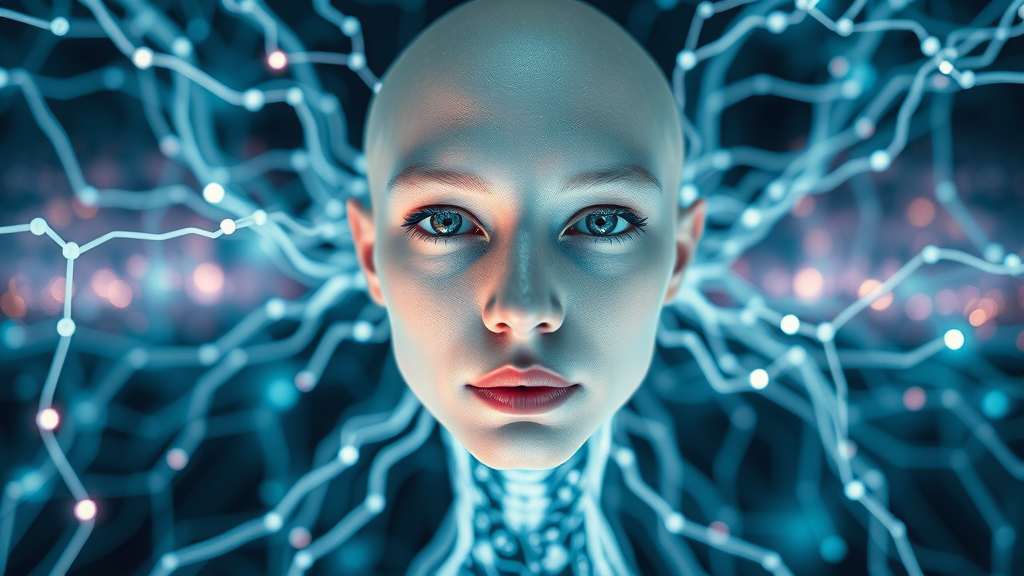
Artificial Intelligence: Definitions and Core Concepts
Artificial intelligence (AI) refers to the capability of a computer program or a system to imitate intelligent human behavior. AI encompasses a wide spectrum, ranging from rule-based systems that automate routine tasks to general intelligence—the hypothetical ability of an AI to perform any intellectual function a human can. Key subsets include machine learning, which enables systems to learn from data, and deep learning, which uses neural networks to process complex information like images and speech.
The main goal is to create ai models that can analyze patterns, draw conclusions, and solve problems autonomously. From language models like ChatGPT to virtual assistants and recommendation engines, these technologies are embedded in everything from smartphone apps to cloud-based services. As AI development continues, we anticipate even more specialized tools and systems, with applications tailored to every domain—ultimately enhancing productivity, decision-making, and creative problem-solving.
A Brief History: From AI Foundations to Machine Learning Breakthroughs
The journey of AI began in the 1950s, as scientists envisioned computers that could replicate human intelligence. Early milestones included the creation of the first neural networks and simple learning algorithms. Although initial progress was slow—due in part to limited processing power and a lack of data—the concept of machine intelligence continued to inspire breakthroughs. By the 1980s and 90s, expert systems and computer programs began solving specific commercial problems.
The 2000s marked the beginning of the age of machine learning, as greater data availability and improved algorithms allowed AI systems to outperform humans in tasks such as image recognition and natural language processing. Today, ubiquitous use of deep learning and large language models has made AI tools central to everything from web search and customer service to medical diagnostics. This rapid evolution shows no signs of slowing, with each breakthrough fueling new ambitions for the future of AI.
Timeline of Major Events in the Future of Artificial Intelligence |
||
Year |
Event |
Impact |
|---|---|---|
1956 |
Dartmouth Conference proposes the term "Artificial Intelligence" |
Lays foundation for AI as an academic field |
1997 |
IBM’s Deep Blue defeats world chess champion Garry Kasparov |
AI outperforms human work in a strategic game |
2012 |
Deep learning breakthrough in image recognition |
AI models surpass human-level accuracy |
2023 |
Generative AI models like ChatGPT and Stable Diffusion go mainstream |
AI changes creative and content industries |
2030 (projected) |
AI is expected to add $15.7 trillion to the global economy |
Economic transformation at global scale |
Key Technologies Shaping the Future of Artificial Intelligence
Several breakthrough technologies are sculpting the future of artificial intelligence, accelerating its adoption and broadening its reach. Among the most significant are advances in machine learning and deep learning, which enable AI systems to discover hidden patterns in massive datasets. Generative AI has emerged as a transformative force, able to produce realistic images, text, and even video clips from simple prompts. At the same time, natural language processing allows computers to understand, interpret, and generate human language, making AI an invaluable addition to customer service, analytics, and creative workflows.
These core technologies are often woven together in real-world AI solutions. For example, a virtual assistant may integrate speech recognition, language models, and predictive analytics. As these systems draw on ever-larger data sources and more sophisticated neural networks, their potential to disrupt traditional processes—and spark new ones—increases. Keeping pace with AI’s evolution means staying informed about these emerging trends and understanding how they interact in practice.
Machine Learning Advancements Driving Artificial Intelligence
Machine learning (ML) continues to be at the heart of the future of ai. Traditional rule-based AI systems have limitations, especially in dealing with real-world uncertainty. Modern ML algorithms, by contrast, train on vast amounts of data—images, speech, text—and adapt their predictions as they learn. Innovations such as deep learning and reinforcement learning have expanded machine learning’s reach into fields like medical imaging, personalized marketing, and autonomous vehicles.
These advancements mean that AI models can now understand context, nuance, and intention better than ever before. For example, predictive analytics powered by ML can forecast consumer demand, detect financial fraud, or optimize supply chains, allowing businesses to respond to market changes in real time. As research continues to push the boundaries, the next wave of machine learning will likely include unsupervised and self-learning models, further accelerating AI’s integration into daily life.
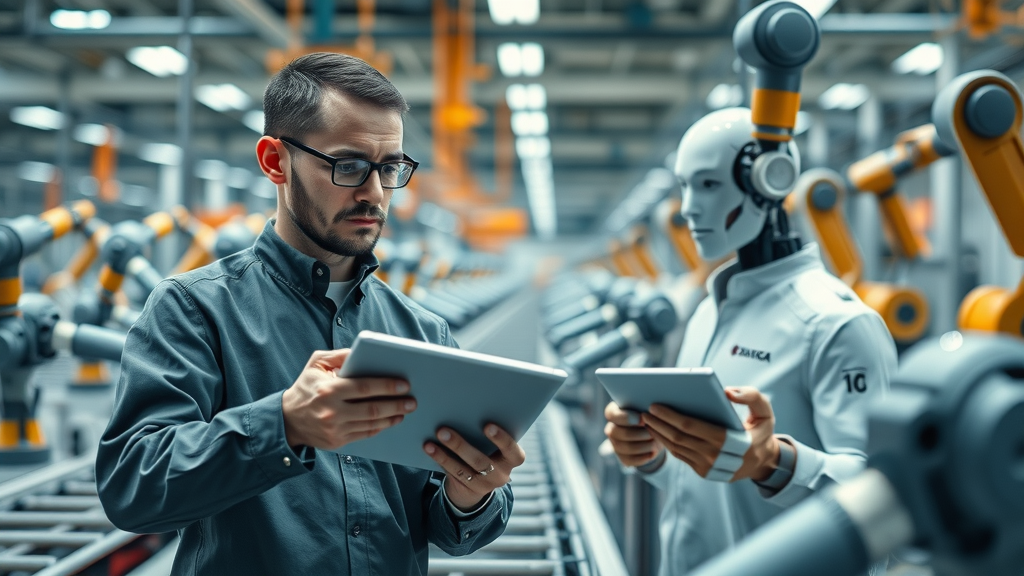
Generative AI: The Next Frontier in the Future of AI
Generative AI is redefining what AI can achieve. Unlike traditional AI, which analyzes data to deliver insights or predictions, generative AI creates entirely new content—text, images, music, and video—from learned patterns. Well-known examples include ChatGPT, DALL-E, and Midjourney, which have propelled AI into the spotlight and began reshaping creative industries. This technology uses large language models and neural networks to generate content almost indistinguishable from human-made work.
The ability to produce creative outputs on demand opens up a wealth of possibilities for content creation, marketing, design, and entertainment. For businesses, generative AI automates content production, enhances idea generation, and streamlines marketing workflows. As generative AI models become more sophisticated, they will continue to challenge assumptions about the boundaries between machine and human creativity, leading us into an era where collaboration with AI is a core part of our daily experience.
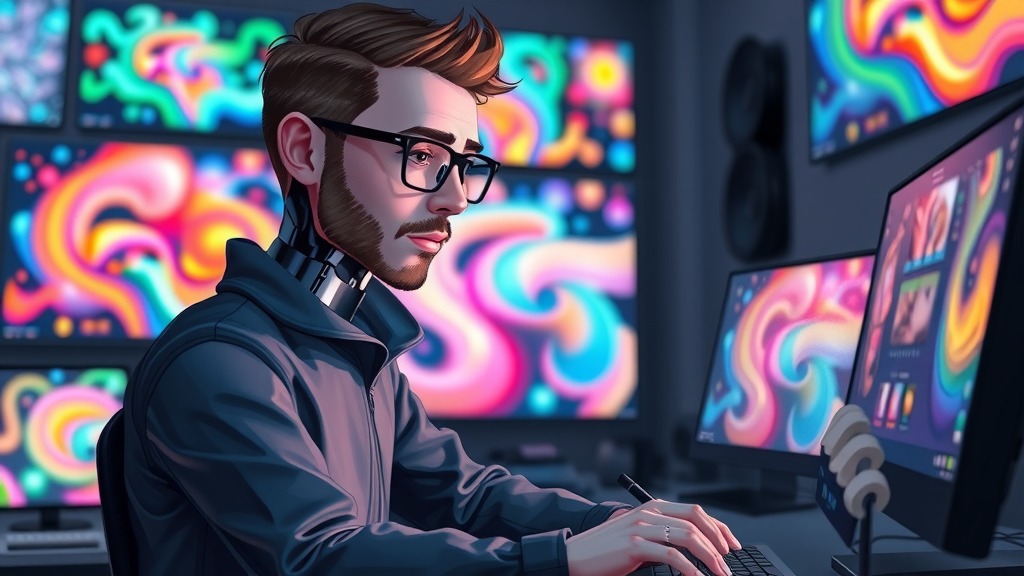
Natural Language Processing and AI in Customer Service
Natural language processing (NLP) bridges the gap between computers and human language, enabling AI systems to read, interpret, and generate text or voice in ways that feel genuinely conversational. NLP is a cornerstone of modern customer service, powering chatbots, virtual assistants, and sentiment analysis tools that handle inquiries, resolve issues, and even anticipate customer needs.
By analyzing and responding to complex language, NLP-driven AI tools can provide 24/7 support, reduce wait times, and offer personalized service at scale. These advances are transforming industries: banks use NLP to process transactions with voice commands, while e-commerce platforms deploy chatbots to help buyers with product recommendations. As NLP matures, AI will deliver even richer, more context-aware interactions, dramatically improving the customer service landscape and cementing its role in the future of artificial intelligence.
Industry Applications: The Future of Artificial Intelligence Across Sectors
The most powerful testament to the future of artificial intelligence is how deeply it’s embedded itself across every major sector. Whether revolutionizing healthcare diagnosis, optimizing financial decisions, personalizing retail experiences, or automating manufacturing, AI solutions are fundamentally transforming how organizations operate. These changes promise enormous boosts in productivity, accuracy, and responsiveness.
By integrating AI tools with industry-specific workflows, organizations are able to leverage predictive analytics, automate complex tasks, and craft experiences tailored to individual needs. As machine learning and generative AI continue to advance, the boundaries of what’s possible in business, science, and society will keep expanding at an unprecedented pace. Below, we explore gamechanging examples from key sectors.
Healthcare: Revolutionary Changes Brought by Artificial Intelligence
Artificial intelligence is ushering in a new era for healthcare. AI-powered diagnostic systems analyze medical images, spot anomalies, and suggest treatment options—sometimes with greater accuracy than human doctors. Machine learning models predict patient outcomes, flag potential complications, and even personalize drug therapies by analyzing genetic data. These advances mean earlier detection, more effective interventions, and transformative patient care.
In addition to diagnostics, AI helps automate administrative processes, optimize hospital resource usage, and streamline the management of vast amounts of data. From virtual assistants handling appointment scheduling to predictive AI models anticipating outbreaks, the potential for AI to relieve pressures on healthcare systems is enormous. As these tools become commonplace, medicine is poised for safer, smarter, and more accessible care worldwide.

Finance and Banking: AI, Machine Learning, and Automation
In finance, AI models and machine learning algorithms underpin everything from real-time fraud detection to customer transaction analysis. Banks deploy AI to spot suspicious activity, manage risk, and optimize trading strategies. Chatbots with advanced AI understand natural language and deliver personalized customer support, while robo-advisors build optimized investment portfolios tailored to individual goals.
The adoption of AI technology in banking also streamlines compliance, automates lending decisions, and improves credit scoring accuracy. Predictive analytics powered by deep learning are helping investors and financial institutions make better, faster decisions. As the industry continues to digitize, automation driven by AI will unlock new business models and place greater emphasis on data privacy, ethical use, and transparency.
Retail and Customer Service: Generative AI and Personalization
The world of retail is undergoing a dramatic shift thanks to generative AI and machine learning. AI-powered personalization engines analyze shopping behavior and predict what products customers want, offering bespoke recommendations in real time. Virtual assistants and chatbots manage everything from product suggestions to after-sales support, enhancing customer satisfaction while freeing up staff for higher-value tasks.
In-store applications are equally impressive, with smart kiosks and augmented reality displays powered by AI systems that deepen engagement and improve decision-making. Generative AI helps retailers create dynamic ads, personalized emails, and even unique product designs at scale. As customer expectations evolve, businesses leveraging AI for customization and customer service will continue to lead the market.
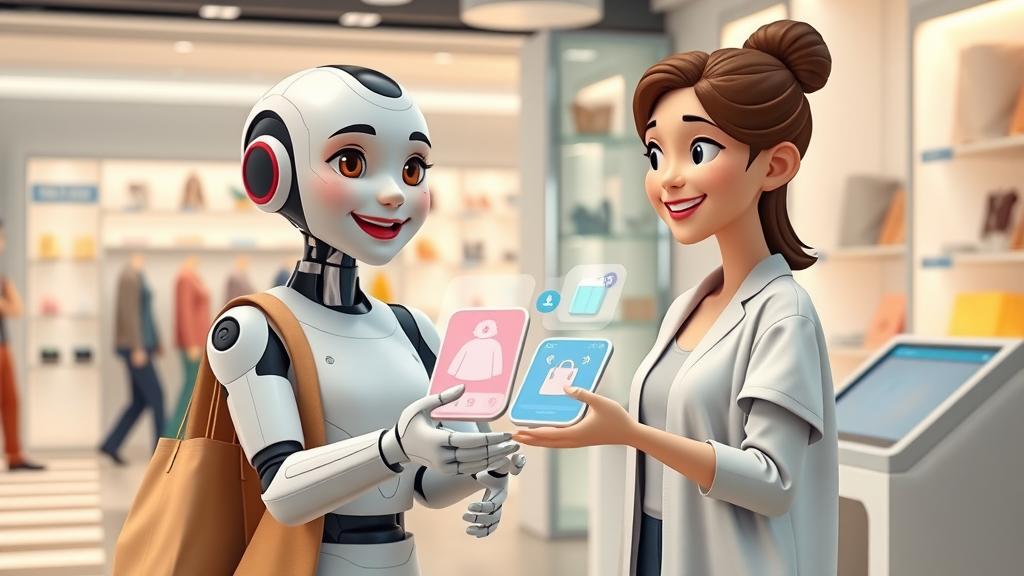
Manufacturing, Supply Chain, and Robotics: The Future of AI
AI-driven automation is revolutionizing manufacturing and supply chain management. Robotics powered by machine learning can perform complex assembly, quality control, and maintenance tasks with speed and precision. AI-powered planning tools optimize logistics, minimize waste, and manage fluctuating market demands—making global supply chains smarter and more resilient.
Robotics and sensor-driven systems integrated with AI enable predictive maintenance, reducing downtime and improving safety. The convergence of AI, the Internet of Things (IoT), and real-time analytics is leading to fully autonomous factories and self-organizing inventory networks. As these advances come of age, the distinction between AI systems and manual human work continues to blur, signaling a profound future for artificial intelligence in industry.
Watch: How Artificial Intelligence Is Transforming Industries
The Societal Impact of the Future of Artificial Intelligence
The future of artificial intelligence is not just a technological journey—it’s reshaping our economic systems, social fabric, and ethical frameworks. On one hand, AI offers huge productivity gains, new jobs, and improved services. On the other, it introduces disruption as tasks and roles traditionally handled by people are automated, necessitating a rethinking of workforce development, education, and regulation.
As AI systems make more independent decisions, questions around data privacy, transparency, and bias become paramount. The growing use of AI in security, surveillance, and law enforcement poses both opportunities and risks, making ethical considerations central to AI’s future evolution. The coming years will require careful balancing of innovation with responsibility.
Economic Effects: Growth, Disruption, and the Future of Jobs
The adoption of AI promises strong economic growth, as AI tools automate mundane tasks and free up workers for more strategic roles. However, it also sparks fears of job displacement, particularly in roles that are repetitive or highly structured. Studies predict millions of new jobs will be created in AI development, analytics, and system oversight, while some existing jobs will disappear or change dramatically.
To thrive in the future of ai, organizations and individuals must embrace reskilling and upskilling, focusing on areas where human creativity, empathy, and problem-solving outshine pure automation. As advanced AI systems become central to business strategy, the value of human work will increasingly lie in tasks that require adaptability, interdisciplinary knowledge, and ethical judgment.
Ethics, Privacy, and Security in Artificial Intelligence
With great power comes great responsibility, and as artificial intelligence permeates our lives, building robust ethical frameworks becomes essential. Protecting user privacy, ensuring fairness, and maintaining transparency in AI decision-making are top priorities for developers, regulators, and society as a whole. The rise of ai solutions that process sensitive data—such as biometric or health records—makes this conversation especially urgent.
Governments and industry leaders are working together to establish ethical guidelines for AI development, focusing on accountability, data protection, and the elimination of bias. The future of AI relies not only on technological progress but also on our ability to establish systems of trust and security that safeguard individual rights and the collective good.
"The rise of artificial intelligence requires equally exponential growth in our ethical frameworks." - AI Ethics Expert

The Future of Artificial Intelligence in the Next 5, 10, and 25 Years
With each passing year, the future of artificial intelligence becomes more tangible. In the next five years, expect to see enhanced collaboration between humans and AI, as well as smarter automation and even greater personalization in digital services. The coming decade promises major industry-wide transformations, while the next quarter-century could see the emergence of artificial general intelligence and seamless human-AI partnership.
Mapping out these horizons helps us understand not only what’s possible, but also what’s at stake. By anticipating how AI systems will evolve, businesses and leaders can harness AI’s strengths while preparing for its most profound disruptions.
Immediate Prospects: What's Next in the Future of AI
In the immediate future, we’ll see AI development focus on expanding accessibility and integrating AI more naturally with existing workflows. Expect smart assistants to become even more context-aware, and for AI-powered virtual assistants to handle more complex tasks across devices. Large language models will continue to power everything from customer service bots to cybersecurity applications, making AI an everyday utility.
Key improvements will revolve around real-time translation, real-world decision-making, and edge computing—where AI runs locally for faster, more private processing. As organizations invest in AI tools and training, the foundations for widespread transformation will become stronger and broader.
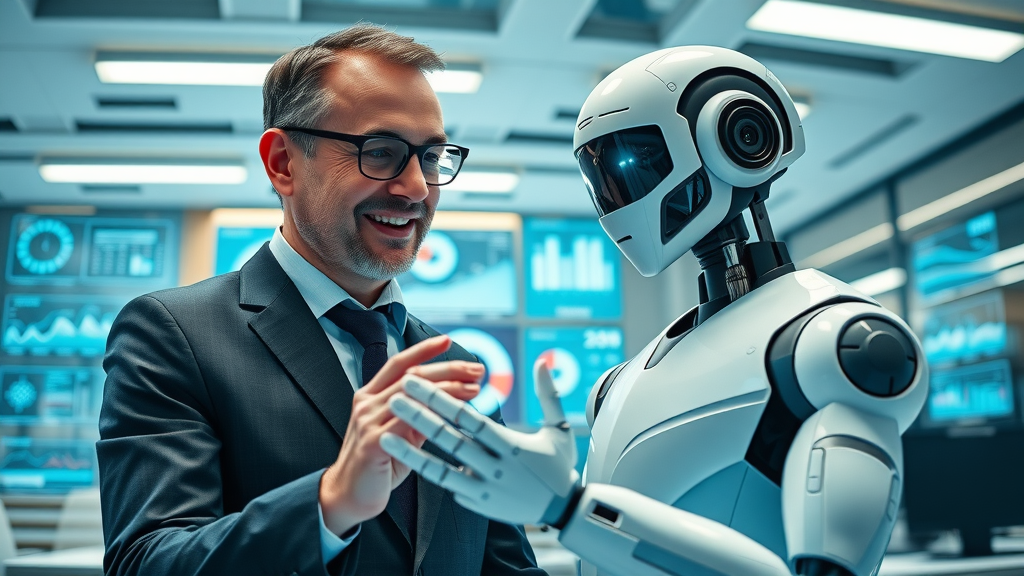
Decade Forecast: Major Shifts Anticipated Due to Artificial Intelligence
Over the next ten years, the integration of artificial intelligence into daily life and business will accelerate. AI-powered autonomous vehicles, advanced medical diagnostics, and self-organizing industrial systems will become routine. The workplace will transform, with greater emphasis on creativity, adaptability, and managing hybrid teams consisting of humans and AI agents.
Ethical issues around privacy, security, and bias will take center stage as AI’s influence grows. Regulatory frameworks that support innovation while protecting individual rights will be key. With proactive planning, the workforce can adapt, ensuring that human skillsets align with a future shaped by smart machines and generative AI technology.
Long-Term Vision: Artificial Intelligence and Human Collaboration
Looking 25 years ahead, the most powerful vision for the future of artificial intelligence is one of partnership between humans and AI. Artificial intelligence will likely augment—not replace—human intelligence, supporting everything from creative endeavors to high-stakes problem solving. The development of artificial general intelligence could enable AI models to learn, reason, and adapt across domains, blurring the lines between “machine” and “colleague.”
This long-term vision will require ongoing commitment to ethical principles, cross-disciplinary education, and global collaboration. If approached thoughtfully, AI could unlock new heights of human achievement and well-being, solidifying its status as the tech gamechanger for generations to come.
Lists: Top Trends Shaping the Future of Artificial Intelligence
Autonomous vehicles powered by machine learning
Generative AI content creation
AI-driven predictive analytics in business
Personalized customer service automation
AI in healthcare diagnostics
Explainer: The Science Behind Generative AI and Machine Learning
People Also Ask: The Future of Artificial Intelligence
What will AI do in the next 5 years?
In the next five years, AI will become even more embedded in everyday life, with advancements in automation, smart assistants, and personalized digital experiences. Expect to see AI systems assisting in healthcare, supporting remote work, optimizing logistics, and powering new forms of interactive entertainment. Generative AI tools will make it easier for businesses and individuals to create content, analyze data, and access real-time insights, ushering in greater convenience and productivity.
Which jobs will AI replace by 2050?
By 2050, it's likely that AI will have automated many repetitive or rule-based tasks, especially in sectors like manufacturing, data entry, transportation, and routine customer support. Jobs that involve structured procedures, such as basic accounting, driving, and some assembly line roles, could become largely AI-driven. However, this change will also create new opportunities in AI oversight, system design, ethics, and creative industries.
What jobs will AI not replace?
AI is unlikely to fully replace jobs that require nuanced human judgment, empathy, creativity, or intricate manual dexterity. Professions in healthcare (like doctors and nurses), education, social work, the arts, and advanced technical roles will continue to need a human touch. These roles benefit from adaptability, interpersonal skills, and decision-making in complex or unpredictable environments, which current AI models cannot replicate.
Can AI replace humans in the future?
While AI will increasingly augment and automate many aspects of work and daily life, it is unlikely to fully replace humans. Instead, the future points to collaboration, where AI performs repetitive and data-intensive tasks, while humans focus on creativity, leadership, and ethical oversight. As AI technology evolves, its ability to complement human abilities and expand what's possible is far more probable than outright replacement.
Frequently Asked Questions About the Future of Artificial Intelligence
How secure is data handled by artificial intelligence solutions? Modern AI systems employ strong encryption, access controls, and frequent audits to safeguard data. However, the security of AI-powered applications depends heavily on robust programming and ongoing monitoring to prevent breaches or misuse.
What is the role of ethics in the future of AI development? Ethics play a central role by guiding AI development towards fairness, transparency, and accountability. As AI becomes more integrated into society, establishing ethical standards will determine how responsibly and equitably these systems are deployed.
Will machine learning keep evolving at the current pace? Given growing investments and rapid research breakthroughs, it’s likely that machine learning will continue to evolve quickly. Emerging techniques in unsupervised, transfer, and reinforcement learning point to ever-more sophisticated AI capabilities in the future.
How will generative AI impact customer service? Generative AI enables faster, more personalized responses and better self-service options in customer support. By automating response creation and adapting to customer needs in real time, generative AI is set to greatly enhance the customer experience.
Key Takeaways: The Future of Artificial Intelligence as the Ultimate Tech Gamechanger
Artificial intelligence and machine learning are rapidly evolving.
Generative AI will have lasting effects on creative industries.
Ethical frameworks and regulations are crucial for responsible adoption.
The workforce must adapt through reskilling and upskilling.
AI augments human potential but won’t humanize every process.
Panel: AI Thought Leaders Discuss The Future of Artificial Intelligence
Conclusion: Embracing the Future of Artificial Intelligence
The future of artificial intelligence is undeniably transformative, promising to reshape economies, industries, and society. Preparing today will ensure we benefit from AI’s full potential while navigating its challenges responsibly.
Ready to Harness the Future of Artificial Intelligence?
Overwhelmed and Frustrated by the Fast-Changing Marketing Landscape? Trouble Keeping Pace? Don’t want to be Late to the Marketing Party? Click the Link and Get “The Ultimate Guide to AI-Powered Digital Marketing Strategies"
Sources
PwC — “Sizing the prize: What’s the real value of AI for your business and how can you capitalise?”
World Economic Forum — “How AI could create as many jobs as it destroys”
The future of artificial intelligence (AI) is poised to revolutionize various sectors, with projections indicating a substantial economic impact. According to a report by PwC, AI is expected to contribute up to $15.7 trillion to the global economy by 2030. (getmind.io)
In the healthcare industry, AI is anticipated to play a critical role in workforce transformation, personalization, and technological upgrades. AI applications are expected to optimize revenue, address labor shortages, and assist doctors in making diagnoses, leading to improved clinical outcomes. (community.nasscom.in)
The integration of AI into the workforce is a topic of debate. While there are concerns about job displacement, AI also presents opportunities for creating new jobs and enhancing productivity. In the future, AI is expected to take over repetitive and mundane tasks, allowing humans to focus on more creative and strategic roles. This shift will require a rethinking of education and training programs to equip the workforce with the skills needed to thrive in an AI-driven economy. (sikich.com)
As AI continues to advance, it is crucial to address the ethical and regulatory challenges that come with it. Issues such as data privacy, algorithmic bias, and the potential for misuse of AI technology must be carefully managed. Governments, organizations, and researchers will need to work together to establish frameworks and guidelines that ensure the responsible development and deployment of AI. (sikich.com)
In summary, the future of artificial intelligence holds immense potential to transform industries, enhance productivity, and contribute significantly to the global economy. However, it also necessitates careful consideration of ethical, regulatory, and workforce implications to ensure that its benefits are realized responsibly and equitably.
 Add Row
Add Row  Add
Add 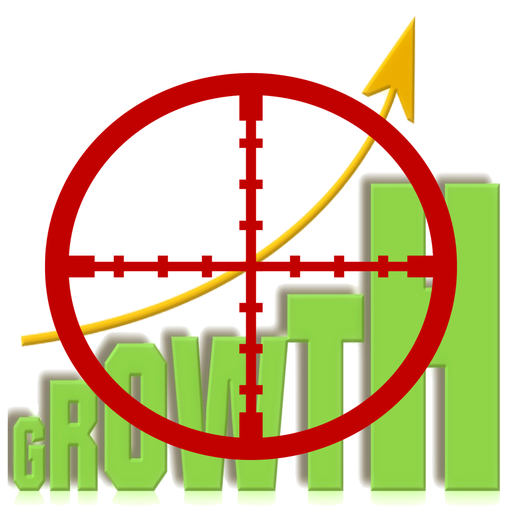




Write A Comment